
Folklore is oral history that is preserved by the people of the culture, consisting of traditions belonging to a specific culture. Such intriguing European Folklore has inspired Shruti Sancheti to translate their fantastical visions into their SS17 mystical collection of ethereal Romance of this fictitious genre of this cultural legacy.

Our proposed collection is deeply influenced by the traditional vibes of continental splendour and resplendence but with a sense of current style, prevailing methods and au-courant technology, transforming old world look into contemporary, to wear pieces.The collection has a quintessential free spirited bohemian vibe with dash of organic vintage mood. Each look is a poetic balance of feminine grace with contemporary styling.

Our Signature blend of hand woven textiles like fluid khadi silk, free flowing woven cotton, trendy light weight hand woven eco friendly denim and chambray, finely woven diaphanous mulberry silk and sheer chanderi comprise the base fabric of the collection however to impart an international look to our Indian handlooms, miscellaneous au-courant fabrics like suede, mesh, etc. have been used in discrepant and minuscule manner to bestow an encompassing and global look to our indigenous handlooms.
A dainty and refined colour palette consisting of soft hues of marshmallow, wheat, apricot, ecru, sand, caramel, dusty orange, rose, ocean blue, muted indigo, chrome, chartreuse, bamboo, canary yellow, olive, pomegranate and poppy red have been use in a tasteful but trendy manner.
Easy separates in form of free flowing ankle length maxi’s, midi dresses, pleated skirts, off shoulder blouses and dresses, wide legged pants, jogger pants, asymmetrical reversible jackets, bomber jackets, boxy jackets have been incorporated to impart a stylish look.
Exquisite handwork in form of delicate petit point embroidery, complicated appliqués, intricate cut work, subtle hand embroidery, ethnic bead-work along with striking use of rivets and eyelets have given a definition to the collection.







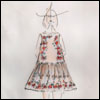


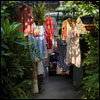


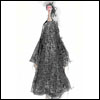



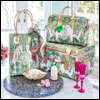



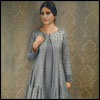






 How about the addictive, woody scent of fresh masala chai, the intense aroma of Indian cardamom, the heavenly marriage of earthy ginger oil and khus; Bombay Perfumery- the recently launched progressive fragrance house presented an India-inspired sensory experience to celebrate its range of scents. Hosted at Yiamas, Bombay Perfumery’s ‘The Sensorium’ brought together some of the maximum city’s most prolific art, culture and design mavens to interpret the scents by way of avant-garde installations.
How about the addictive, woody scent of fresh masala chai, the intense aroma of Indian cardamom, the heavenly marriage of earthy ginger oil and khus; Bombay Perfumery- the recently launched progressive fragrance house presented an India-inspired sensory experience to celebrate its range of scents. Hosted at Yiamas, Bombay Perfumery’s ‘The Sensorium’ brought together some of the maximum city’s most prolific art, culture and design mavens to interpret the scents by way of avant-garde installations.